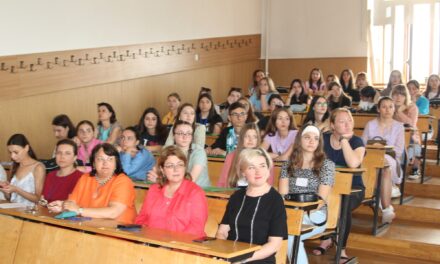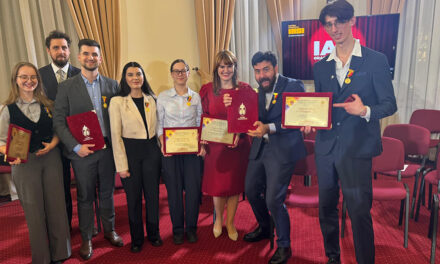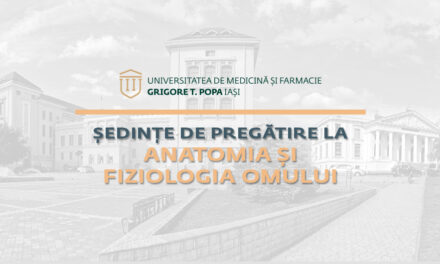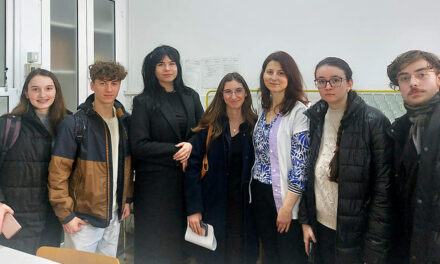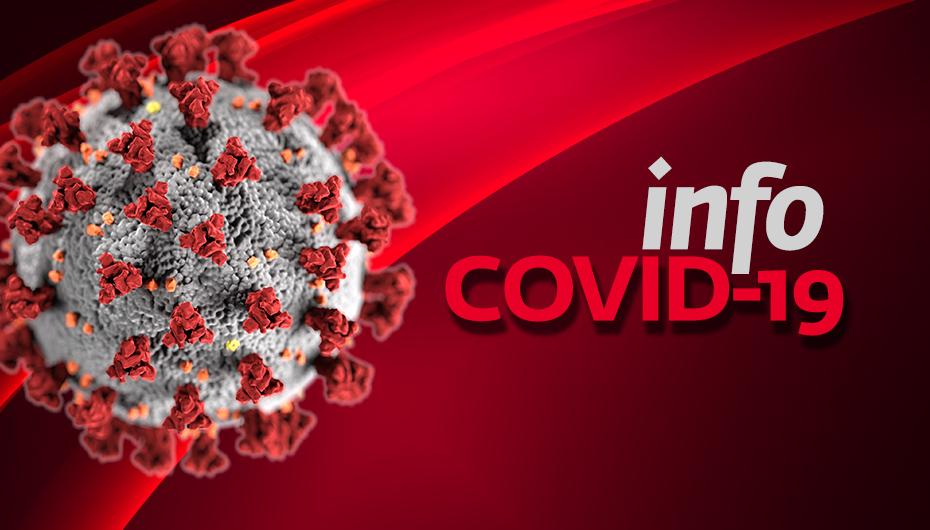Premiere at IRO: Endometriosis Surgery with the Da Vinci Robot
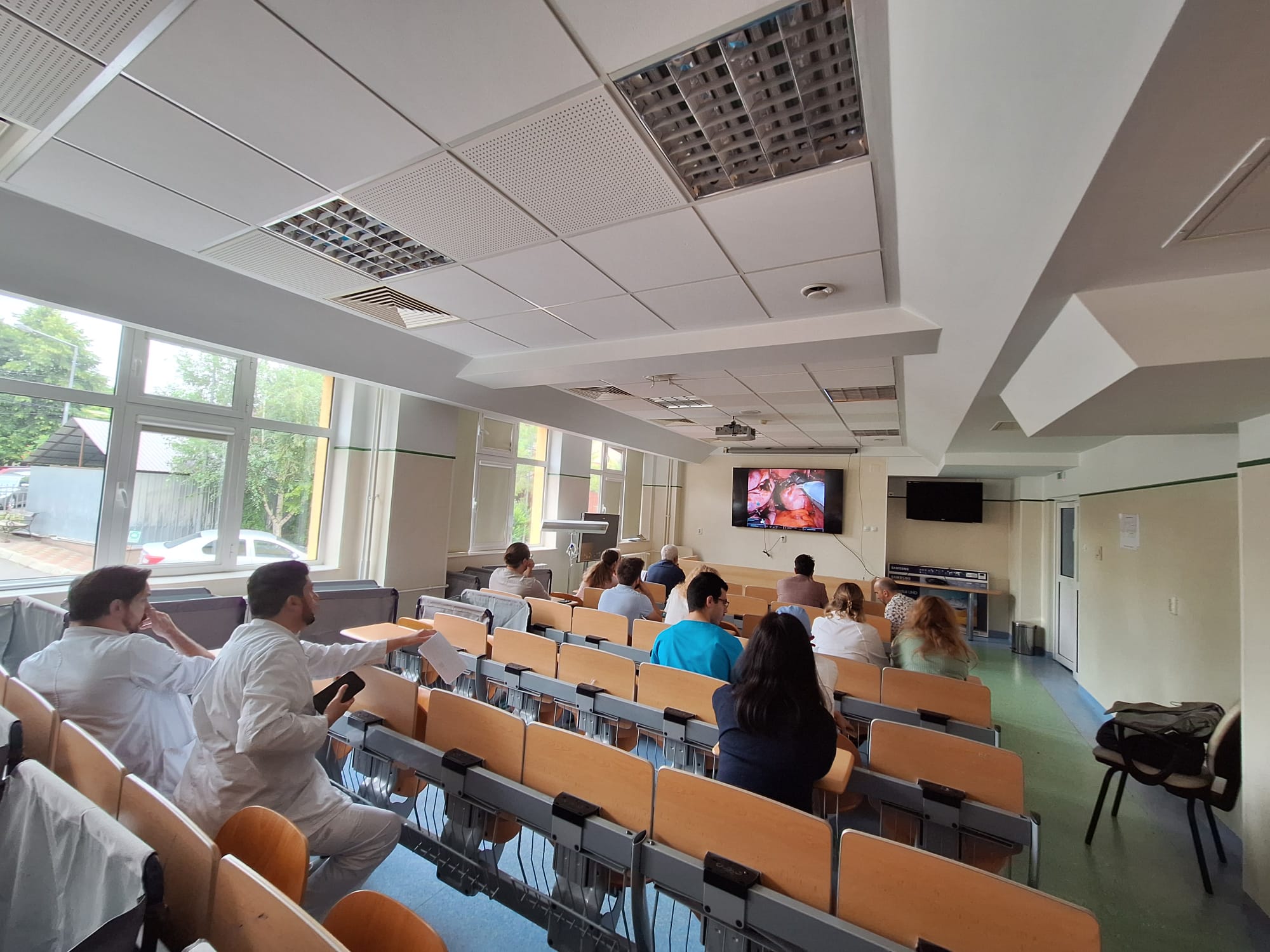
A team of young surgeons from the Regional Institute of Oncology Iași (IRO), supervised by Prof. Dr. Ceana Nezhat from the United States, performed a robotic-assisted surgery for a challenging endometriosis case on Thursday, July 4. The 26-year-old patient from Suceava County had two ovarian cysts, measuring 5 cm and 12 cm. „The surgery was long and challenging but represents a real success – the patient preserved her reproductive potential,” stated Dr. Răzvan Vieriu, a member of the surgical team. „This success, achieved with the latest generation robotic system acquired through a project by UMF Iași, demonstrates that the future of medicine is already being practiced at IRO,” emphasized Prof. Dr. Viorel Scripcariu, rector of the „Grigore T. Popa” University of Medicine and Pharmacy in Iași.
The surgery lasted three hours, during which the Da Vinci robot’s mechanized arms removed the two large endometriotic cysts: 12 cm from the left ovary and 5 cm from the right ovary. „For us surgeons, time becomes irrelevant; whether a surgery lasts three hours or ten, it feels like a second has passed. The perception of time is replaced by concentration and adrenaline. At the end, you’re not tired but waiting to see that everything went well, that the surgery was successful,” explained Dr. Mădălina Gavrilescu, the „bedside surgeon” or „fifth arm” of the robot during the operation.
In the amphitheater of the Regional Institute of Oncology, 15 young doctors quietly watched the surgery, broadcast live on a plasma screen. Another 150 students and residents attended online. „Incredible, they saved the ovaries of this 26-year-old girl!” exclaimed Professor Eugen Târcoveanu, one of the most renowned surgeons in Iași, with a career spanning half a century.
The surgeons responsible for this feat were Răzvan Vieriu and Mădălina Gavrilescu, supervised by Prof. Dr. Ceana Nezhat, a world-renowned specialist in minimally invasive gynecological surgery. Prof. Nezhat was a special guest at the „Grigore T. Popa” University of Medicine and Pharmacy in Iași to lecture at a major scientific session: „Advances in Minimally Invasive Gynecologic Surgery.”
The patient’s name is Alexandra, from Siret, Suceava County. Severe pelvic pain brought her to Iași, to the „Cuza Vodă” Clinical Hospital of Obstetrics and Gynecology, where Professor Bogdan Doroftei evaluated her. An MRI identified a 12 cm endometriotic cyst on her left ovary and a 5 cm cyst on her right ovary. Multiple deep endometriosis lesions were also found on both uterosacral ligaments and the rectosigmoid. Endometriosis is a condition where tissue similar to the uterine lining grows outside the uterus, causing intense pain and other symptoms. This severe diagnosis was treated with one of the most advanced surgical systems in the world.
The Da Vinci robotic system, acquired by IRO through a grant from the „Grigore T. Popa” University of Medicine and Pharmacy in Iași, enabled this groundbreaking surgery. The training of young surgical teams and the extraordinary presence of Professor Ceana Nezhat in Iași marked a premiere for the surgeons at IRO in the NE region of Moldova – the first robotic endometriosis surgery, offering the 26-year-old woman a life free of pain.
„Because the patient is small in stature, the upper limit of the left ovarian cyst was at the level of the navel, which made the surgery more difficult. The cysts were removed, preserving both ovaries, and deep endometriosis lesions were resected. The surgery was long and challenging, but it represents a real success – the patient preserved her reproductive potential. For us, the surgical team, this premiere represents a new horizon; the Da Vinci robot is the perfect tool for treating this very common and debilitating pathology,” said Dr. Răzvan Vieriu.
How Does Endometriosis Surgery with the Da Vinci Robot Work?
The surgeon controls the robotic instruments using a console located near the operating table. The Da Vinci system provides a high-resolution three-dimensional view and allows precise movements of the instruments. Using the „arms,” the surgeon locates and removes endometrial tissue and adhesions. Ovarian cysts are carefully identified and removed, preserving as much healthy ovarian tissue as possible. Depending on the size and position of the cysts, they can be completely excised or drained and then removed. Hemostasis in the excised areas is ensured using electrocautery.
The Future of Surgery at IRO
Two years ago, on June 23, the first robotic-assisted surgery in the NE region of the country was performed using the robotic minimally invasive tumor ablation system acquired through the CENEMED project, conducted under the aegis of the „Grigore T. Popa” University of Medicine and Pharmacy in Iași, in collaboration with the Regional Institute of Oncology Iași. Since then, four teams of young surgeons, assisted by technicians, have performed over 200 minimally invasive surgeries. This system has revolutionized surgery by increasing precision and reducing recovery time. However, the purchase price of such a system can reach millions of euros, plus maintenance and consumable costs, making it inaccessible to most hospitals in the country.
„At the Regional Institute of Oncology Iași, a hospital covering the entire Moldova region, with highly trained medical staff, optimal conditions are ensured for the use of robotic surgery, thanks to the modern pre-existing equipment in the operating and ICU blocks. Therefore, it is not a coincidence that future surgery can be practiced here today and that those who practice it are my young surgical colleagues, gaining experience with a state-of-the-art robot. Robotic medicine is also practiced in other hospitals in the country, but we have the only system equipped with two consoles – one for the surgeon performing the operation, and the second for learning, for the surgeon who wants to familiarize themselves with the procedure,” explained Prof. Dr. Viorel Scripcariu, rector of UMF Iași.
Interview with Professor Ceana Nezhat
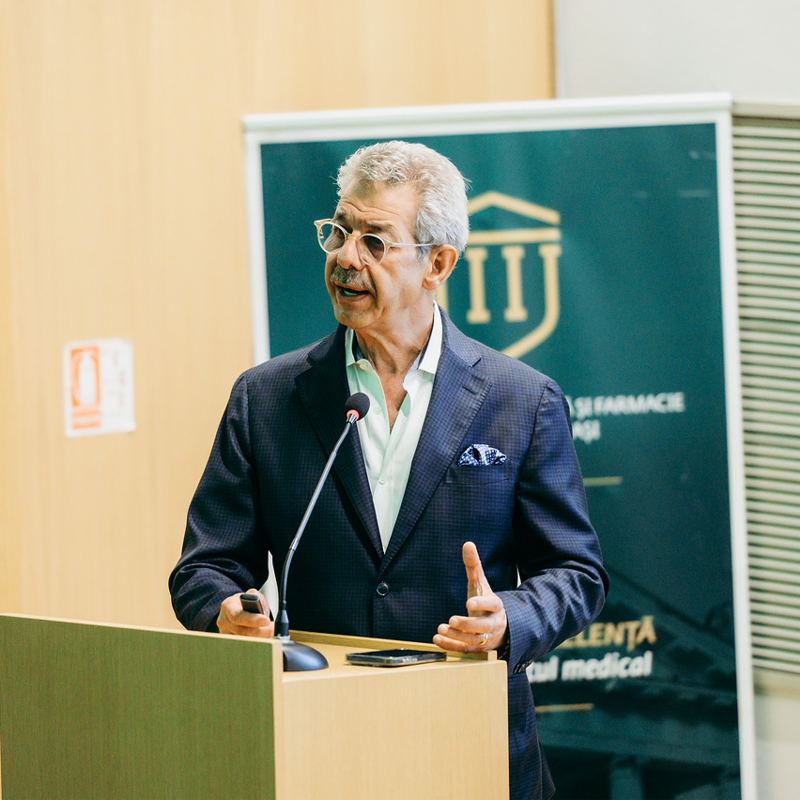
Professor Ceana Nezhat is an internationally renowned minimally invasive surgeon with unparalleled expertise in the treatment of multi-organ endometriosis and fertility-enhancing surgery. He has pioneered numerous procedures that have advanced the field of surgery through video laparoscopy and robotic techniques. In addition to his clinical work, Dr. Nezhat serves as an Adjunct Professor at Emory University and Fellowship Director at the Nezhat Medical Center. His award-winning publications have set a high standard in medical literature, earning him numerous accolades for his surgical skills, pioneering techniques, and dedication to teaching.
Pelvic endometriosis surgery is known to be one of the most challenging pelvic surgeries. Why is robotic surgery, specifically using the da Vinci robot, considered the most effective treatment for endometriosis? How does the da Vinci robot assist the surgeon practically?
Professor Ceana Nezhat: I would delete the words “most effective”. I would replace it with Da Vinci Robot is an effective method of treating extensive endometriosis specifically teaching the next generation.
How many operations have you performed using the da Vinci robot throughout your career?
I’ve been doing Da Vinci robotic surgery for almost 20 years and have taught many physicians nationally and internationally.
In your opinion, is the da Vinci Surgical System superior to conventional laparoscopic surgery? If so, why?
Robotic assisted surgery can be a facilitator and bridge the gap in teaching minimally invasive surgery to the generations that have limited skill in performing advanced minimally invasive surgery with conventional video laparoscopy.
Can you describe the key moments and outcomes of today’s surgery?
3-D immersive environment, articulating instruments and lack of tremor facilitated identification of the anatomy separation of normal and abnormal tissue following micro surgical principles, a traumatic removal of ovarian cysts and reconstruction was the highlight of the case.
Could you tell us more about the team of surgeons at the Iasi Regional Oncology Hospital that you coordinated for today’s surgery?
The patient selection, preoperative proper work up, and preparation was an important aspect. Anesthesia, operating room staff, and surgical assistant made performing the surgery with ultimate ease. Considering dual console, it was an excellent way to show and teach the technique. Ideally, this would lead to a standardization and globalization of the minimally invasive surgery with minimizing potential complication and maximizing the best outcome for the patient.

